Rethinking how we use land
More "zero" science this week, except this time I felt that I wasn’t necessarily starting at zero. With my background in landscape architecture, many of the topics were familiar to me or I had touched on them at some point in my recent academic career. I was able to understand concepts much better since I had some prior knowledge of them which felt good. Jonathan is an engaging speaker so it was easy to follow along with what he was saying. One of the main takeaways I got from the week was that Jonathan really wanted us to think about agriculture and the farm itself outside of cities. The vast majority of the food we eat is grown on land outside of the city in a rural environment, which we often seem removed from and neglect to think about. It was important to kind of bring us back and remind us of that fact. This same thought reminded me of this last year, when my best friend did a landscape architecture project based on sustainable agriculture techniques. Being around that harkened back to the same point that agriculture is foundational to food production and systems yet often goes unnoticed and feels separate from city life.
Rethinking traditional farming techniques by replacing them with things such as food forests, intercropping, and companion planting seems like it needs to be the future of farming. The downside is that it is not fast to establish, so I wonder when and how this can be applied. I’m also still a bit confused how harvesting in food forests would work since ideally the whole ground plane would be covered in crops.
Jonathan’s presentation on what he has done with open source beehives taught me a lot about the communities of bees and problems they are facing. The colonies act as such a well-developed machine yet is based on one central bee- the queen. I like the idea of using an open-source model for tracking bee health because it is a global problem and bees reside everywhere.
Activities
Playing with soil
Soil testing is something I’ve done before in previous classes. It’s always fun to get your hands dirty and use qualitative knowledge to establish soil type, with differing amounts of sand, silt, and clay. It was cool to test some nearby soil types in Valldaura and Terragona as well as their nitrate balance.
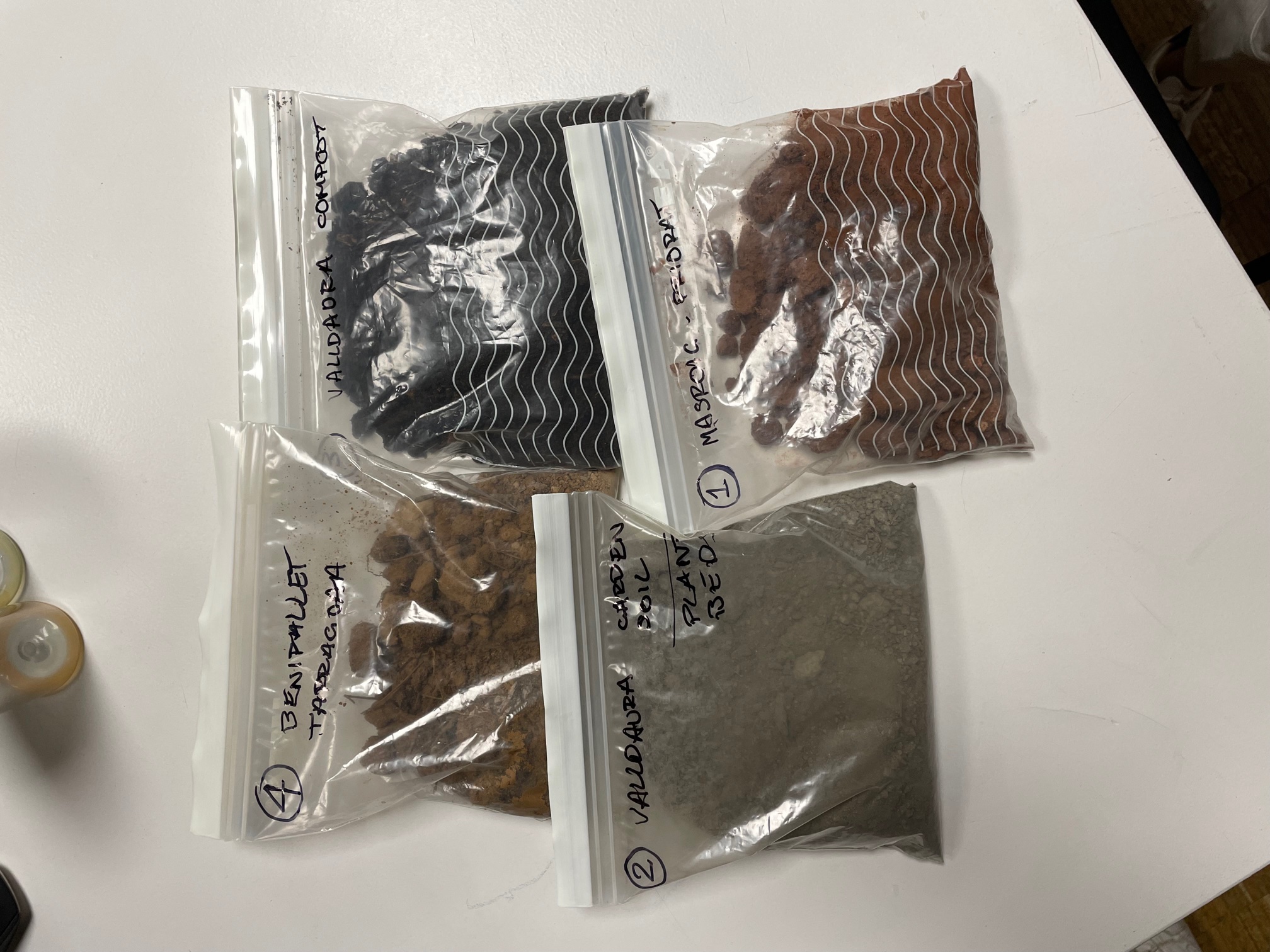
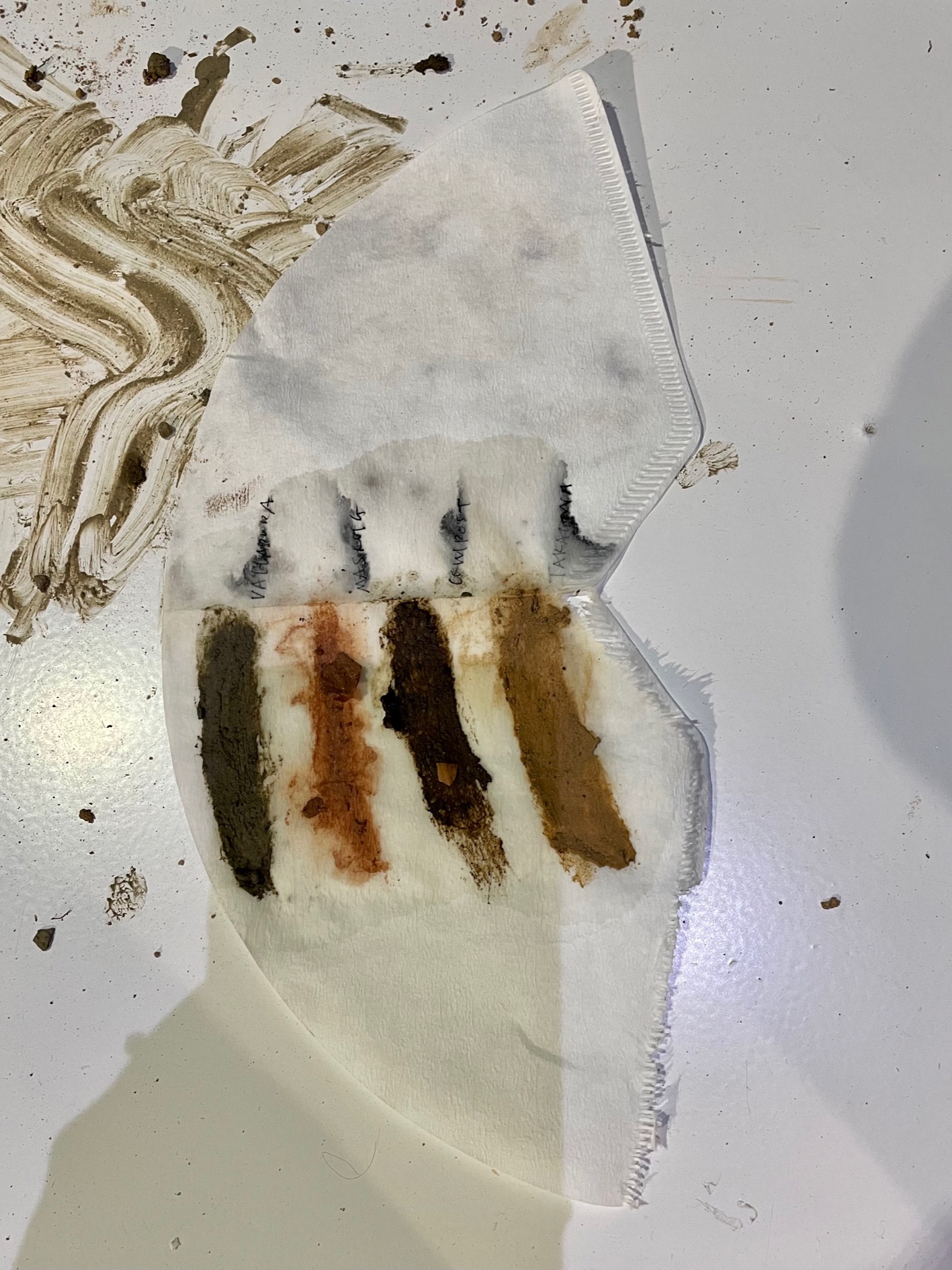
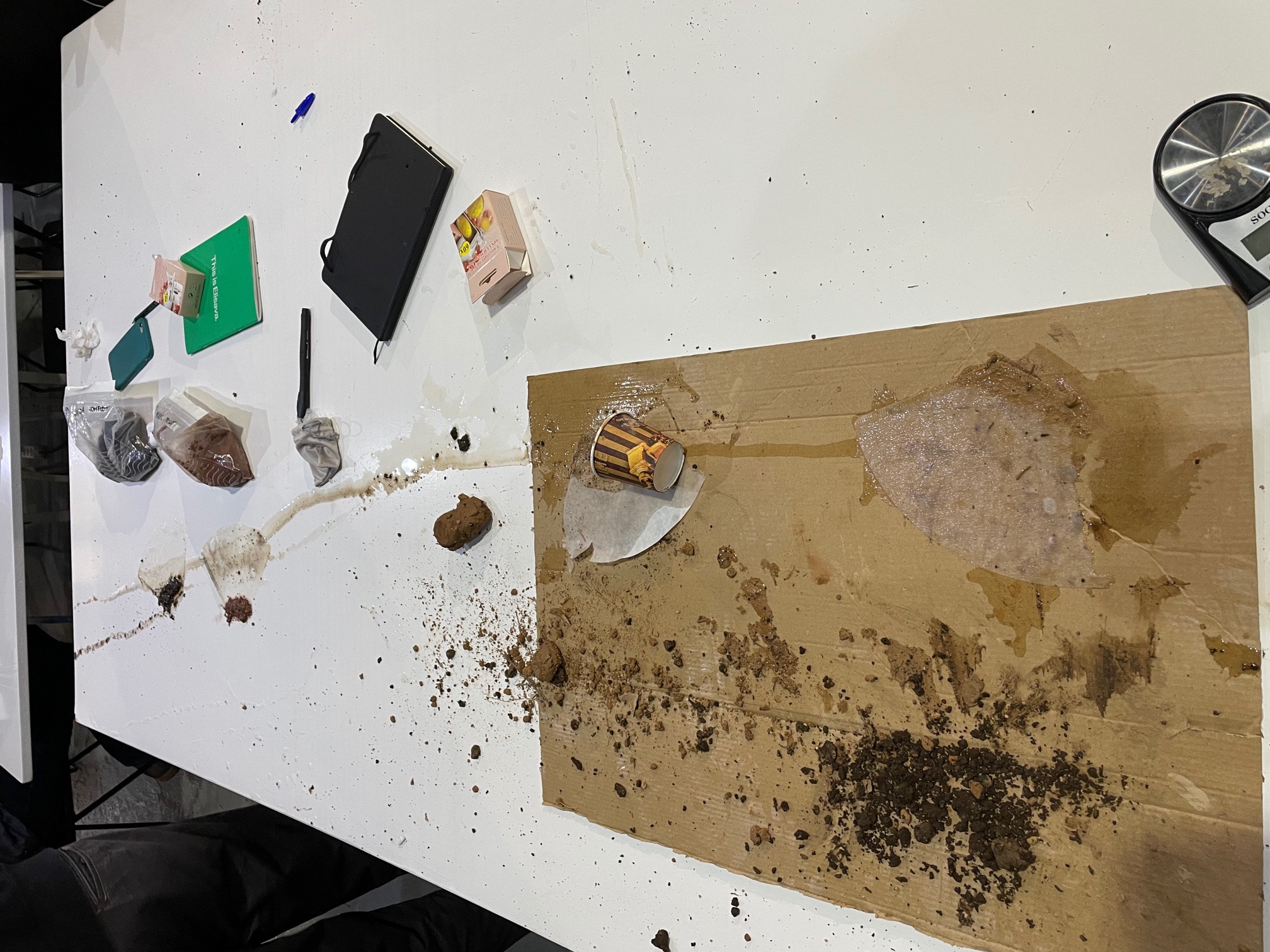
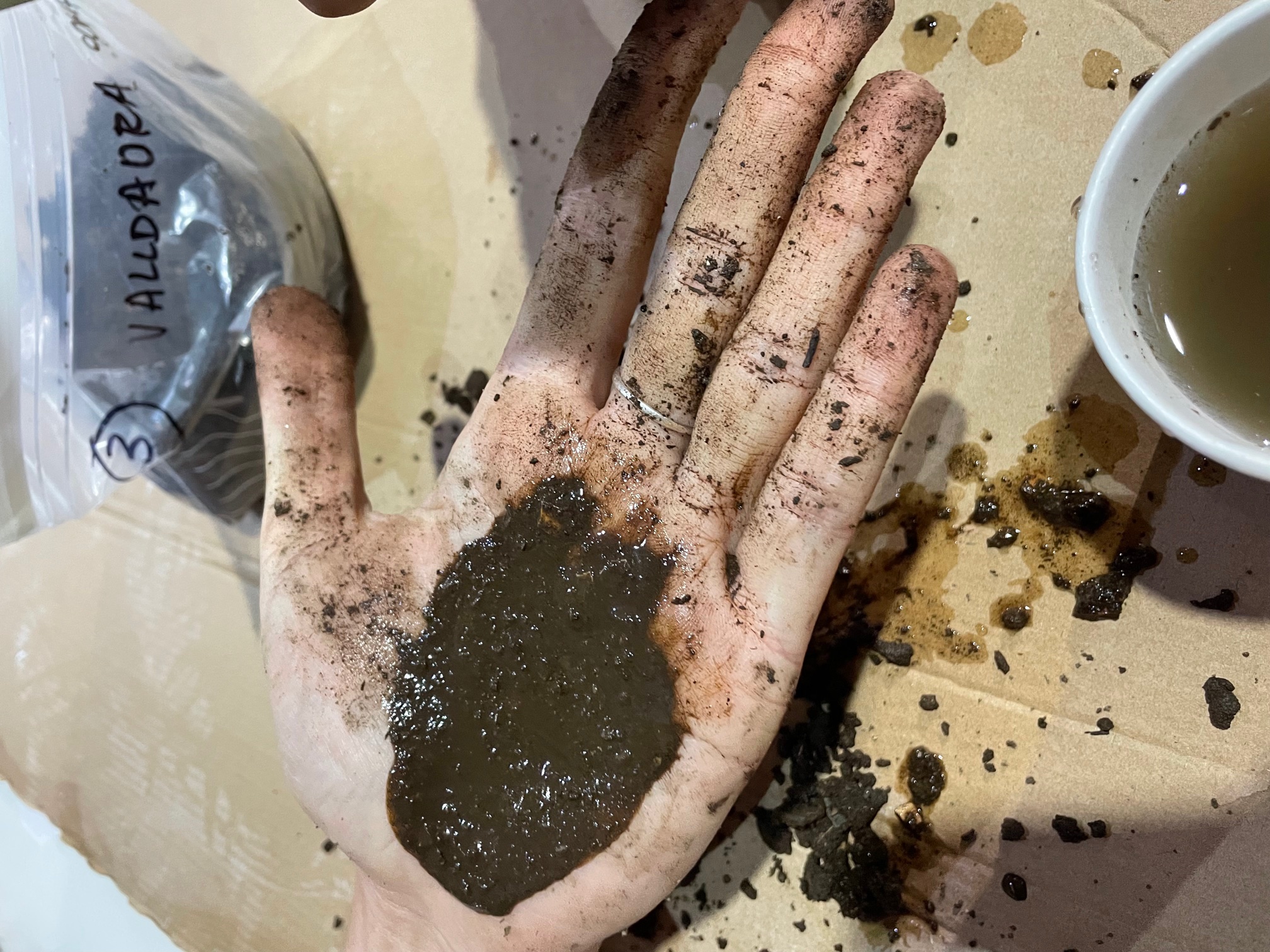
Essential Oils
Essential Oils
Getting to make eucalyptus essential oil was definitely a highlight of the week. The equipment used to make it, the distiller, was pretty to look at with its brass color and hammered texture. I have always really enjoyed using essential oils so it was special to be able to take part in making some. I didn’t think the process involved so much to do with pressure, temperature differences, and condensation. Melting the ice on the hot tubes was an entertaining way to wait for the oils. I have an even greater appreciation for essential oils now because I see how much goes into making a tiny single drop.
Biomaterials
We got the chance to make a couple more biomaterials, this time with milk (caseine) and glycerol. I didn’t know using acids such as vinegar could be a central ingredient in some biomaterial recipes. I want to learn more about the science behind that, how the components work together, and how long they generally last before decomposing.
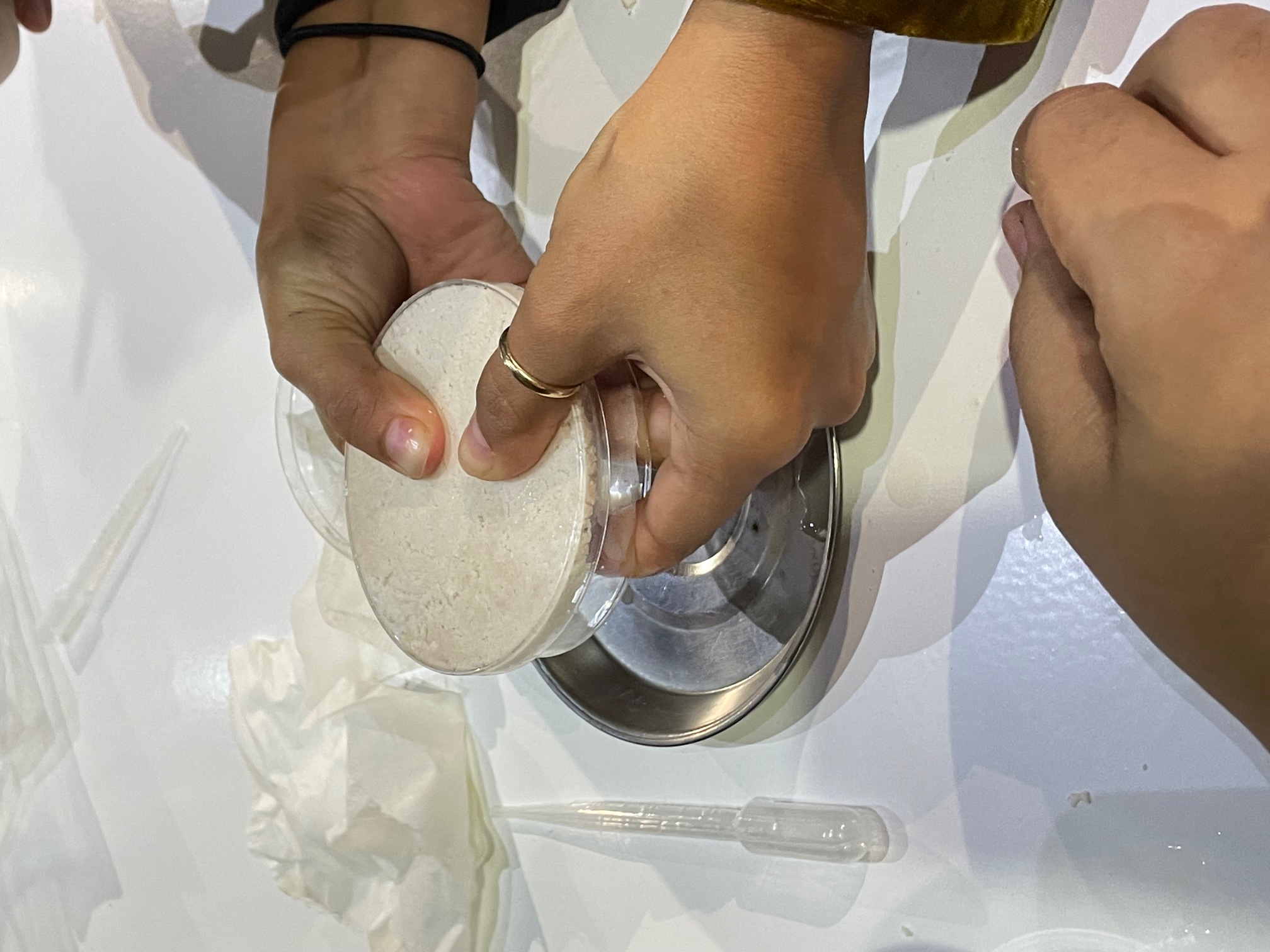
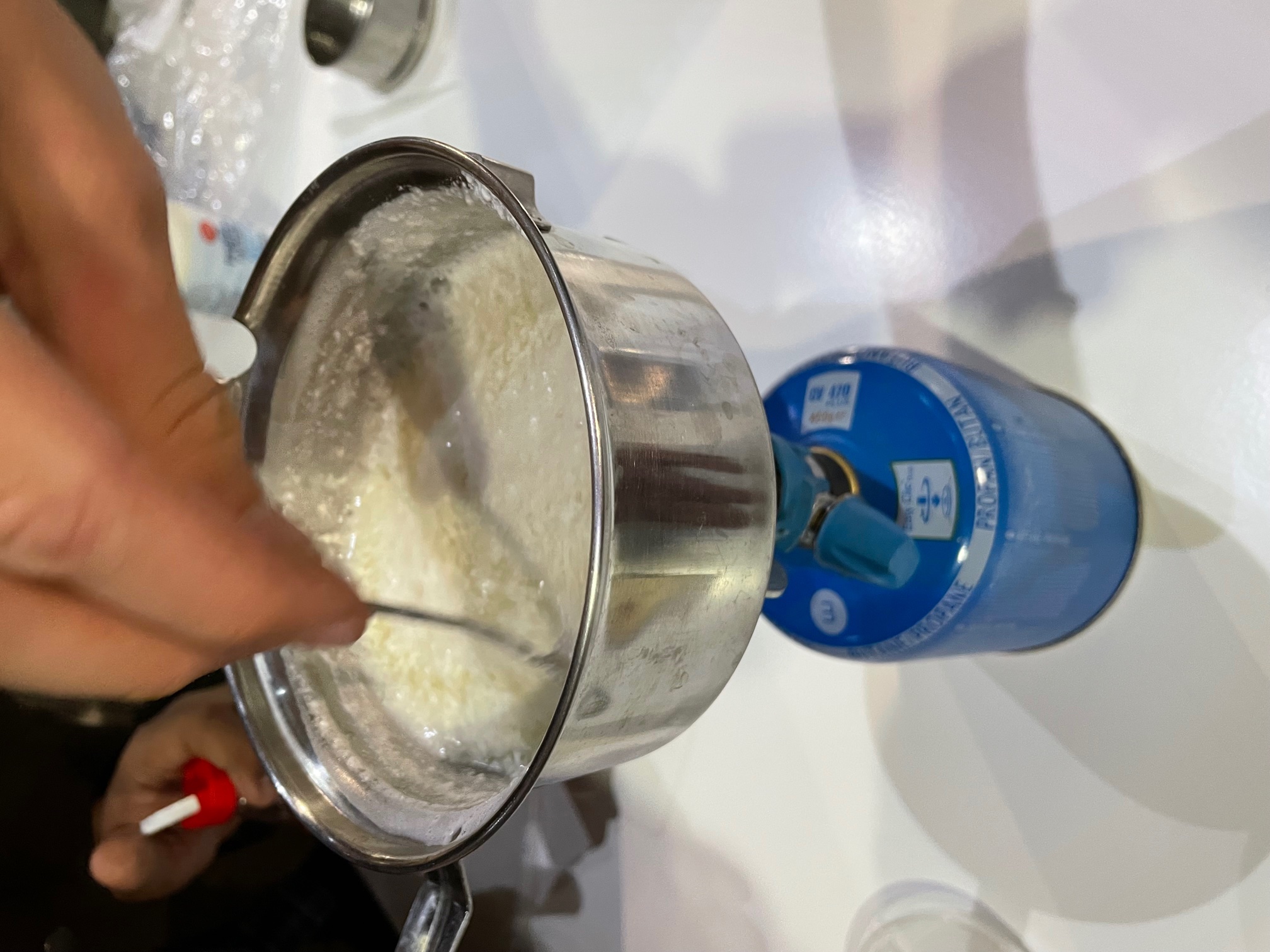
Ron Wakkary Talk
On Friday, I attended a presentation at Elisava by Ron Wakkary about his new book Things We Could Design for more than Human-Centered Worlds. His main point, to which I wholeheartedly agreed, was called designing with. Not designing for or by. As designers, we will always hold a human perspective towards the world which will impact every decision we make. But by focusing on designing WITH, we can pay more attention to cohabitation and inclusion of all species. Another interesting idea he had was about designing with the end in mind. Thinking about how a place or product will end up at the end of its life and in what form. I think designing in this way would create a more circular world where humans are not the sole focus and we realize that design functions on its own in some ways, with nature always playing a part.